We founded CROWDCONSULTANTS in 2016 with the ambition to build a successful Consultancy based on a new work approach, a close to zero carbon footprint and the avoidance of resource wear and tear. We are proud on having received multiple awards on our journey, especially for “work different.” our unique model of trust-based flexible remote digital co-working leveraging sharing economy principles. Establishing and evolving this model goes along with continuous and often controversial discussions about our four core values: entrepreneurship, fun, diversity and sustainability.
One of the topics that has come up continuously in our discussions was the potential link between global warming and population growth, two of the most intensively discussed and documented themes of our times. Some of us digged deeper, but found it hard to find a simple answer and to distinguish between facts and fake news. Hence, we decided to ask some of the worlds leading information designers for a facts-based graphic explanation of the matter.
One of them is Jan Schwochow, who has just won the German Reporter Award 2022 in the category data journalism (after winning numerous other prestigious awards in his impressive 30 year-long career as infographic artist).
Jan had a very simple idea: to combine global population change and temperature change as a function of time by combining the latest numbers on World Population published by the Untited Nations with the renowned warming stripes initially created by climate scientist Ed Hawkins. By combining these facts, Jan didn’t stop our discussion. He made us even more curious to dig deeper into an often very confrontational discussion about whether population growth is a key driver of past, present, and future climate change and if so, whether this link should be thought of at all, because it may lead to some undesirable conclusions. That’s why we decided to create this page as foundation for facts-based discussions.
Please feel invited to join the discussion on our Linkedin-page and/or suggest further graphics and facts to info@crowdconsultants.com
Ending poverty – over the coming decades – is crucial to stop population growth. Only by raising the living standards of the poorest, in an environmentally-friendly way, will population growth stop at 9 billion people in 2050.
Hans Rosling
Test your knowledge! Slide over the question to get the right answer
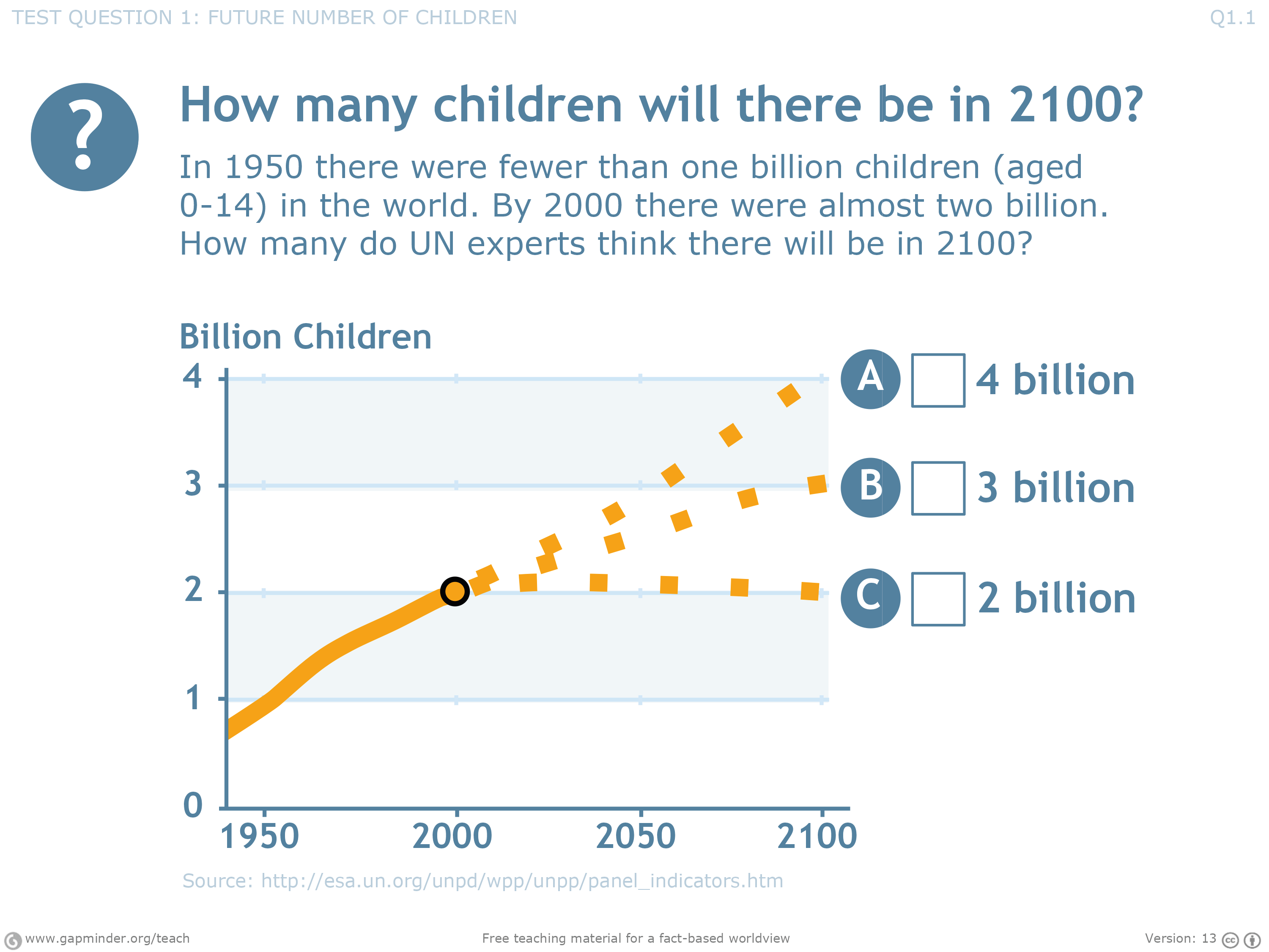
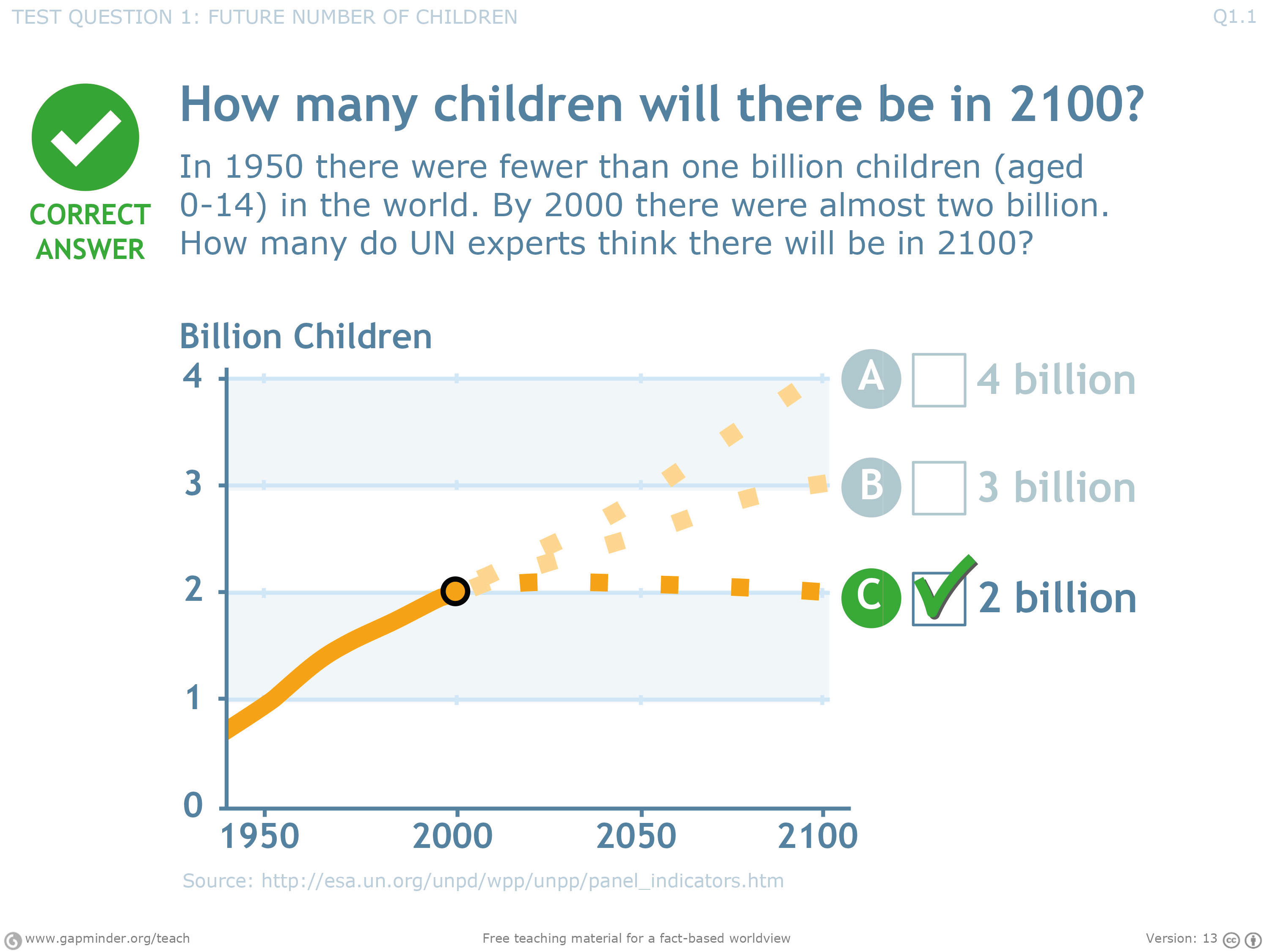
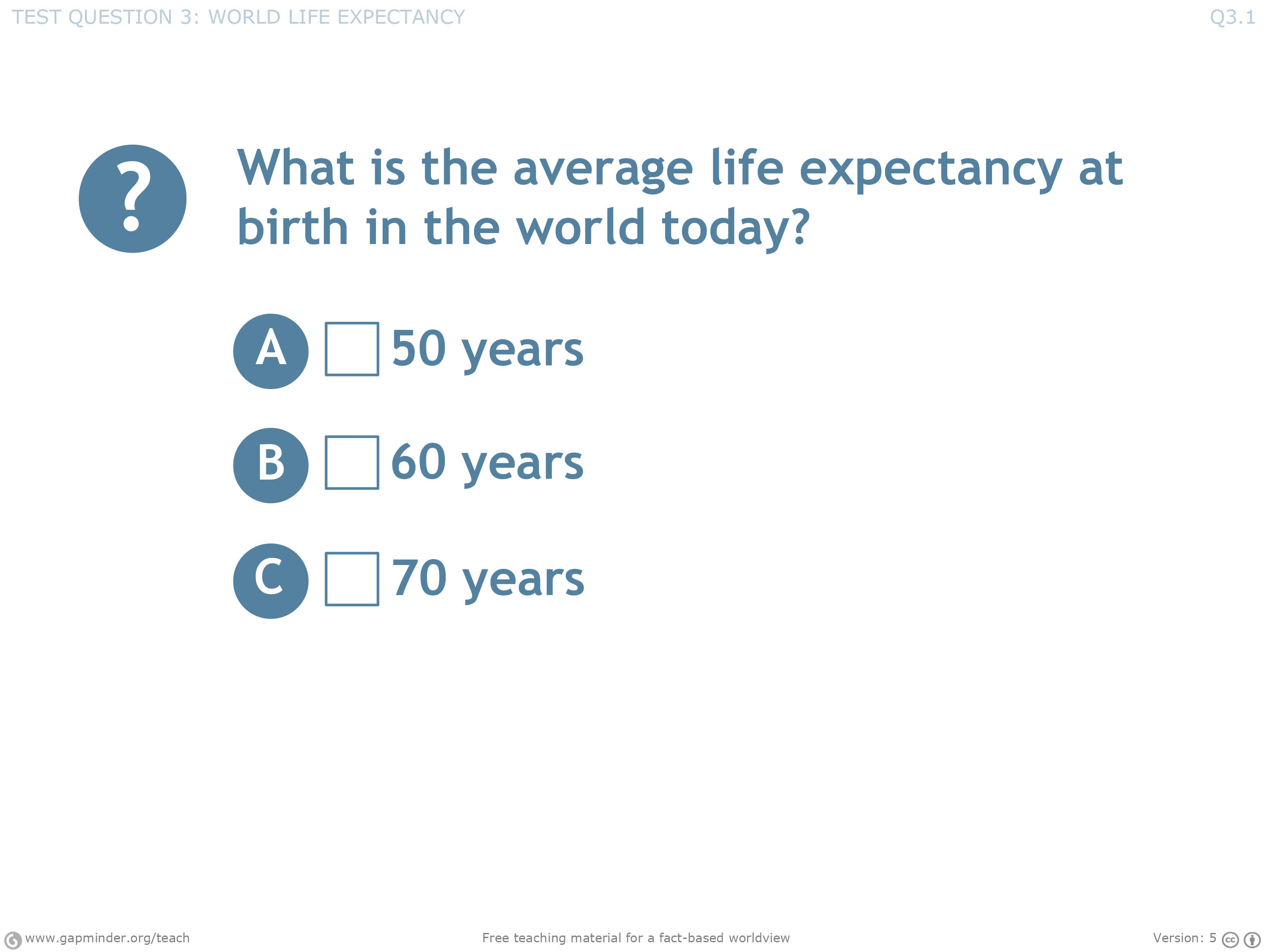
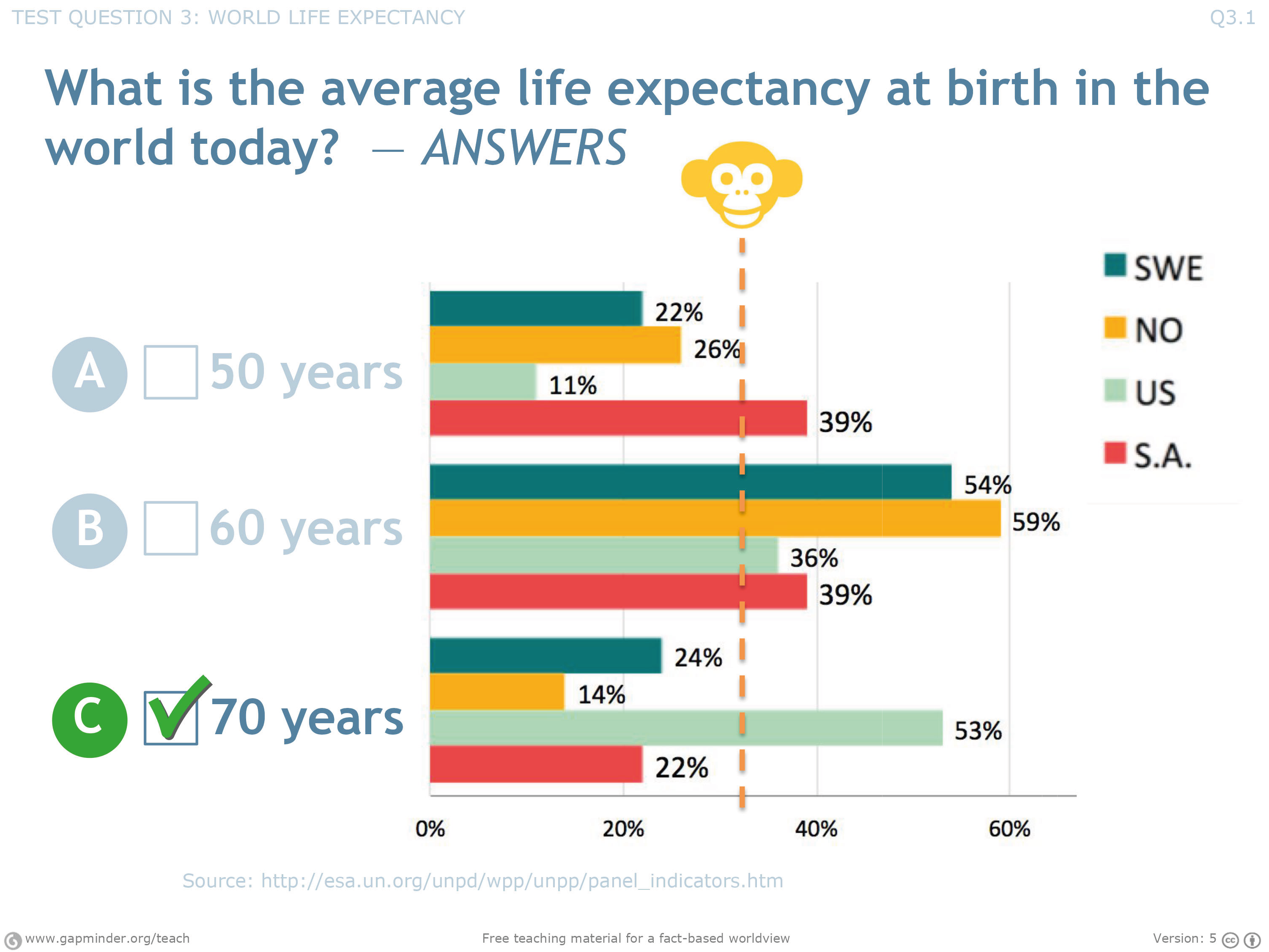
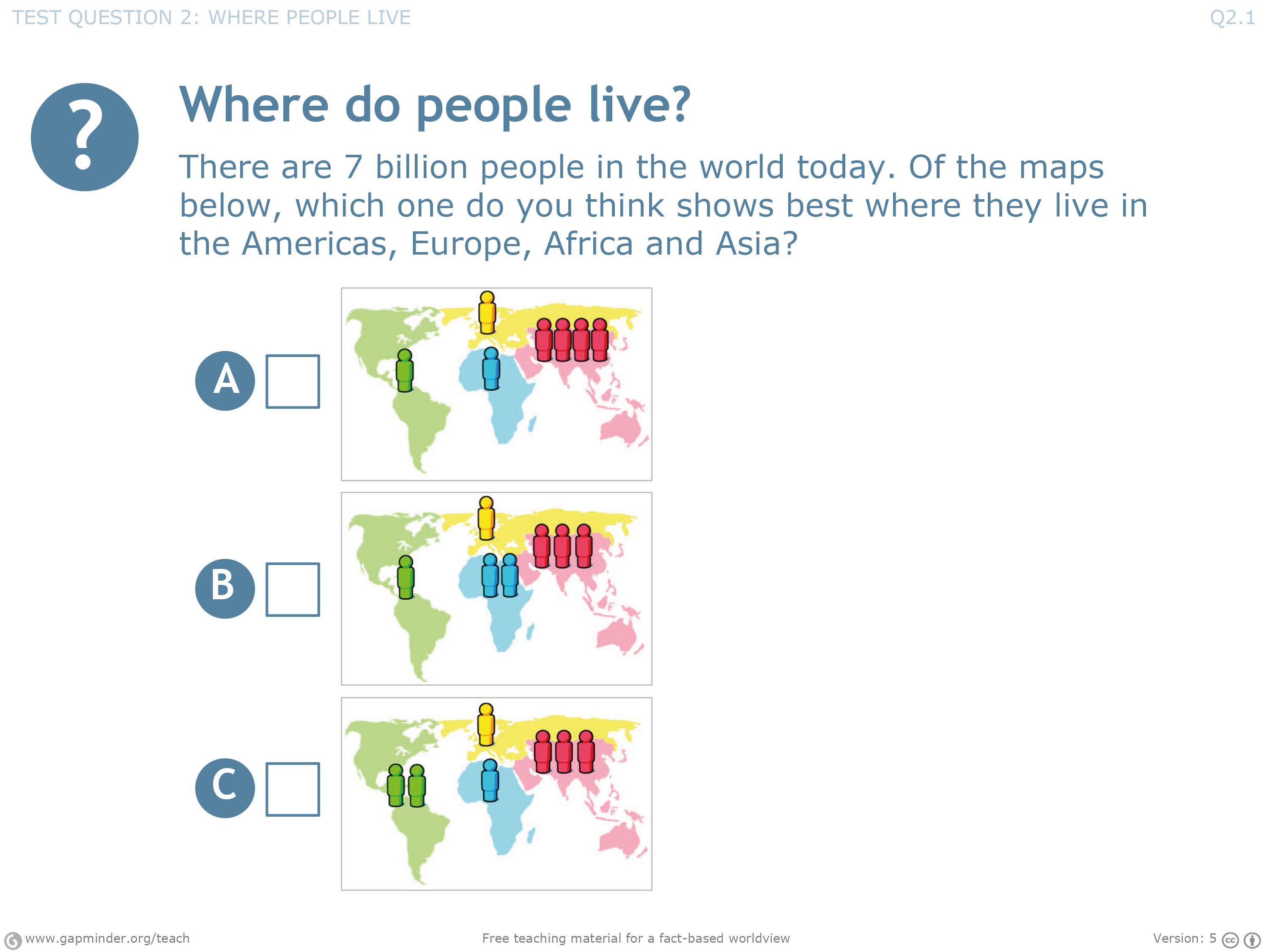
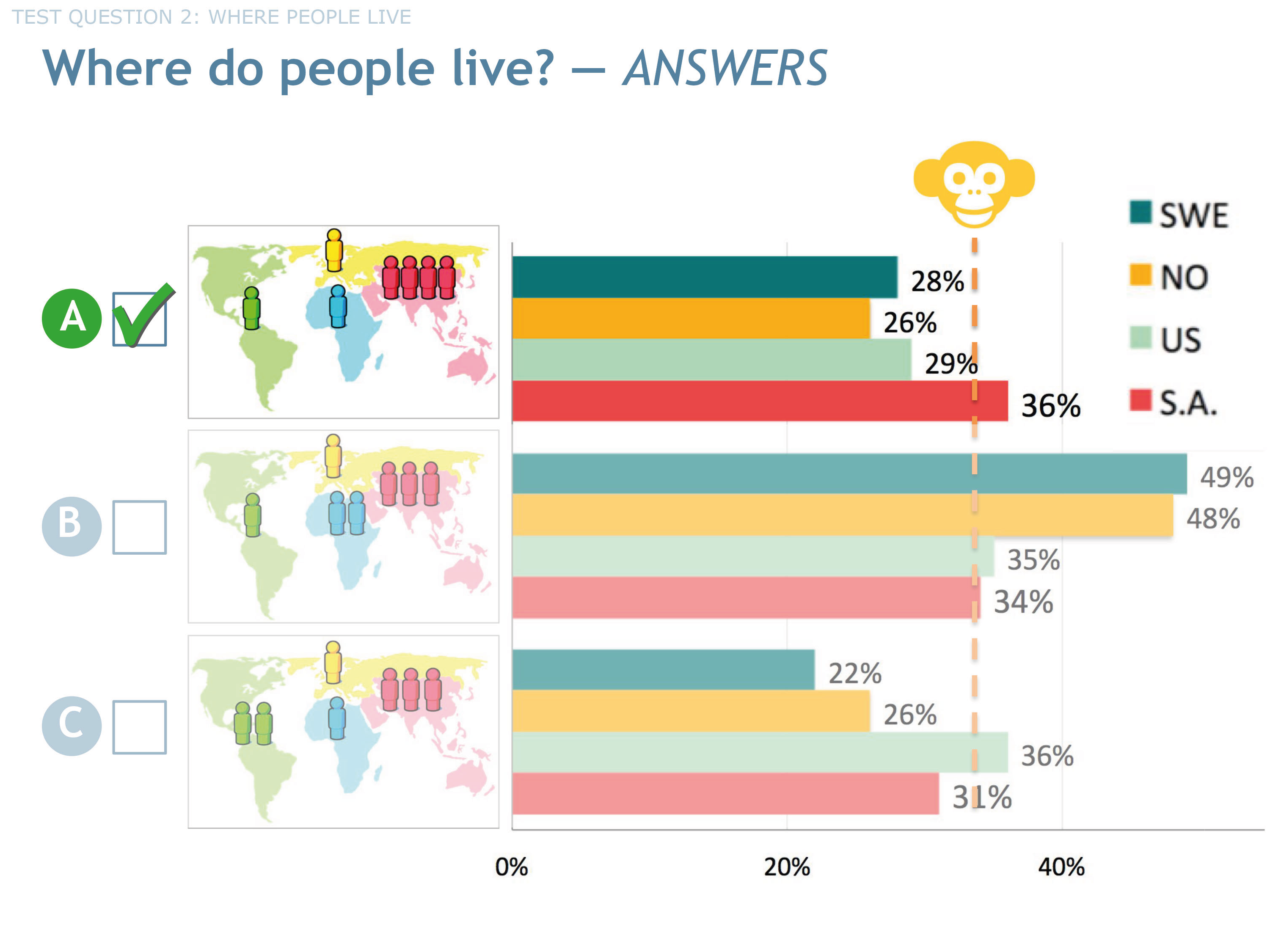
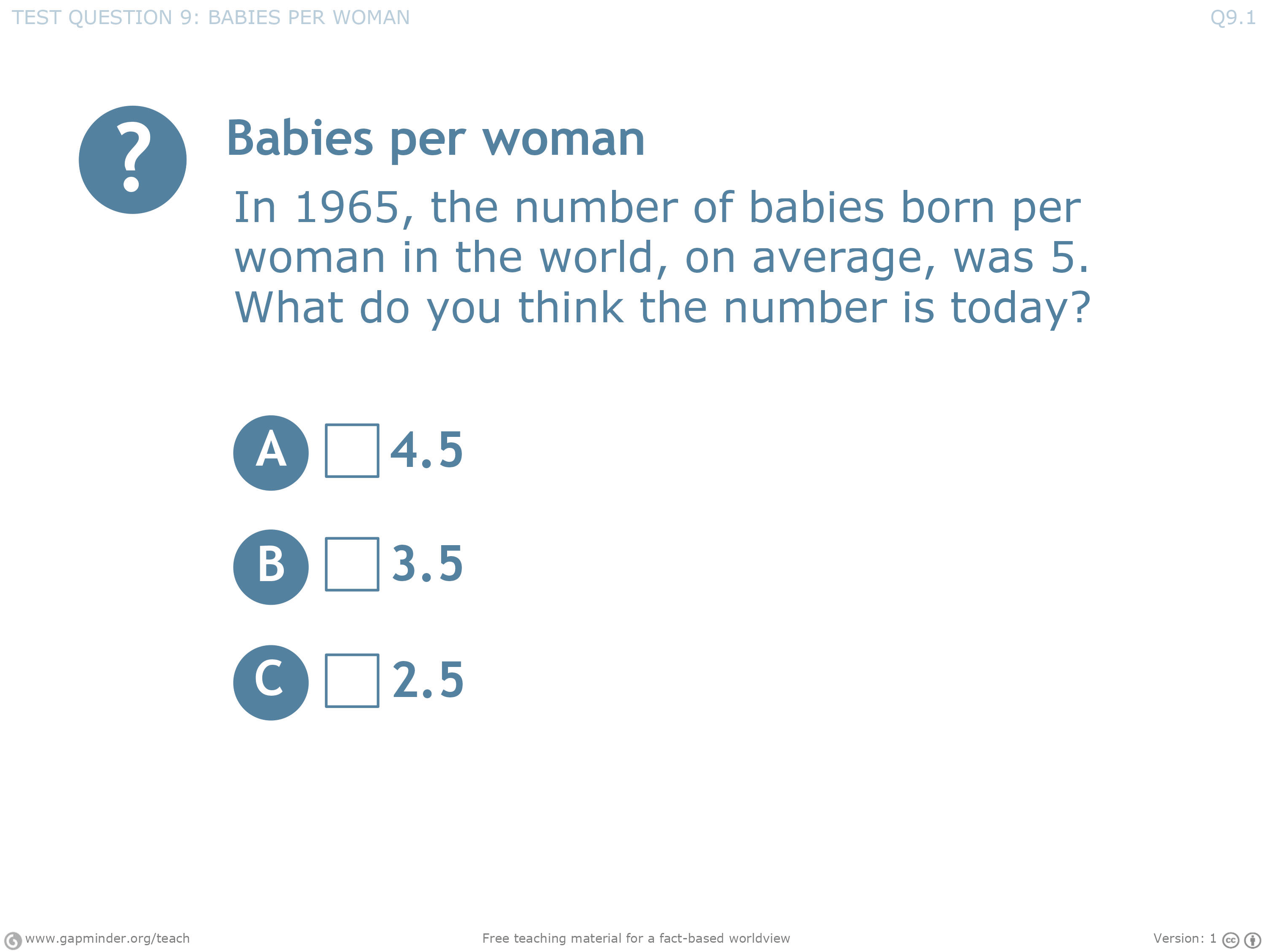
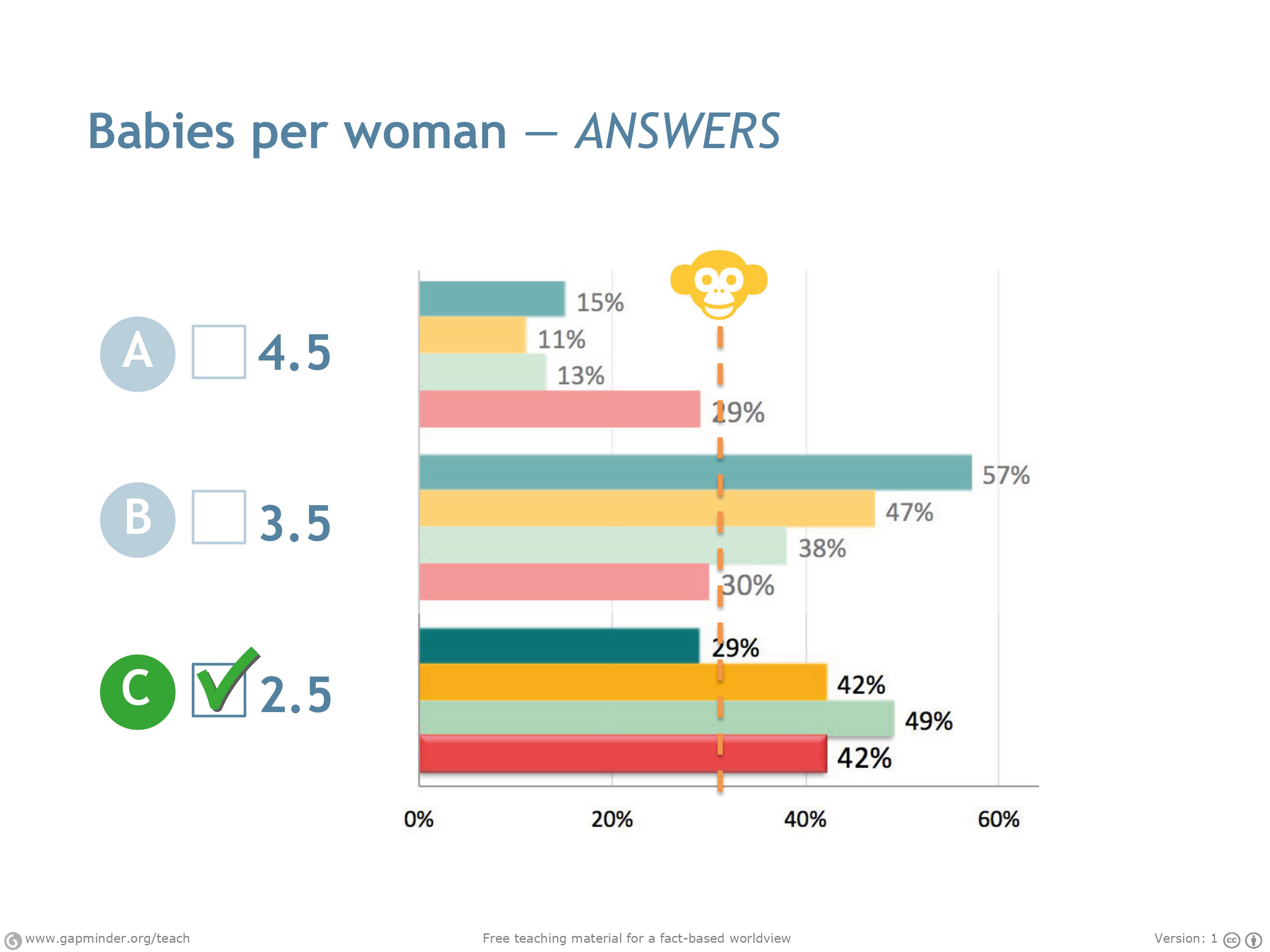
Short answer — More adults
The future fast growth is not due to the same reasons as the fast growth historically. In the future, people will indeed survive longer, but life expectancy is only going to increase a little bit. And the number of children in the world is expected to remain stable. The main reason for the future fast growth is the highly predictable fill-up of adults, as larger young generations grow older as explained in another slideshow.
Short answer — It dropped
Throughout history, women on average have given birth to more than 5 babies. But in the 1960’s the number suddenly started dropping. Today it’s down to less than three. Most likely it will continue to drop down to two or even below.
Short answer — Very reliable
Already back in the 1950’s the UN Population experts were able to predict very precisely the population growth for the next 50 years. The forecasts made today predict that by the end of the century, there will be around 11 billion people in the world. The track record of the UN statisticians shows that their global forecasts have been very accurate historically.
CROWDCONSULTANTS 360 GmbH
Akazienstraße 3a · 10823 Berlin
© 2022 CROWDCONSULTANTS | Imprint | Data Privacy
Our website uses cookies to provide you the best experience. However, by continuing to use our website, you agree to our use of cookies. For more information, read our Data Policy.